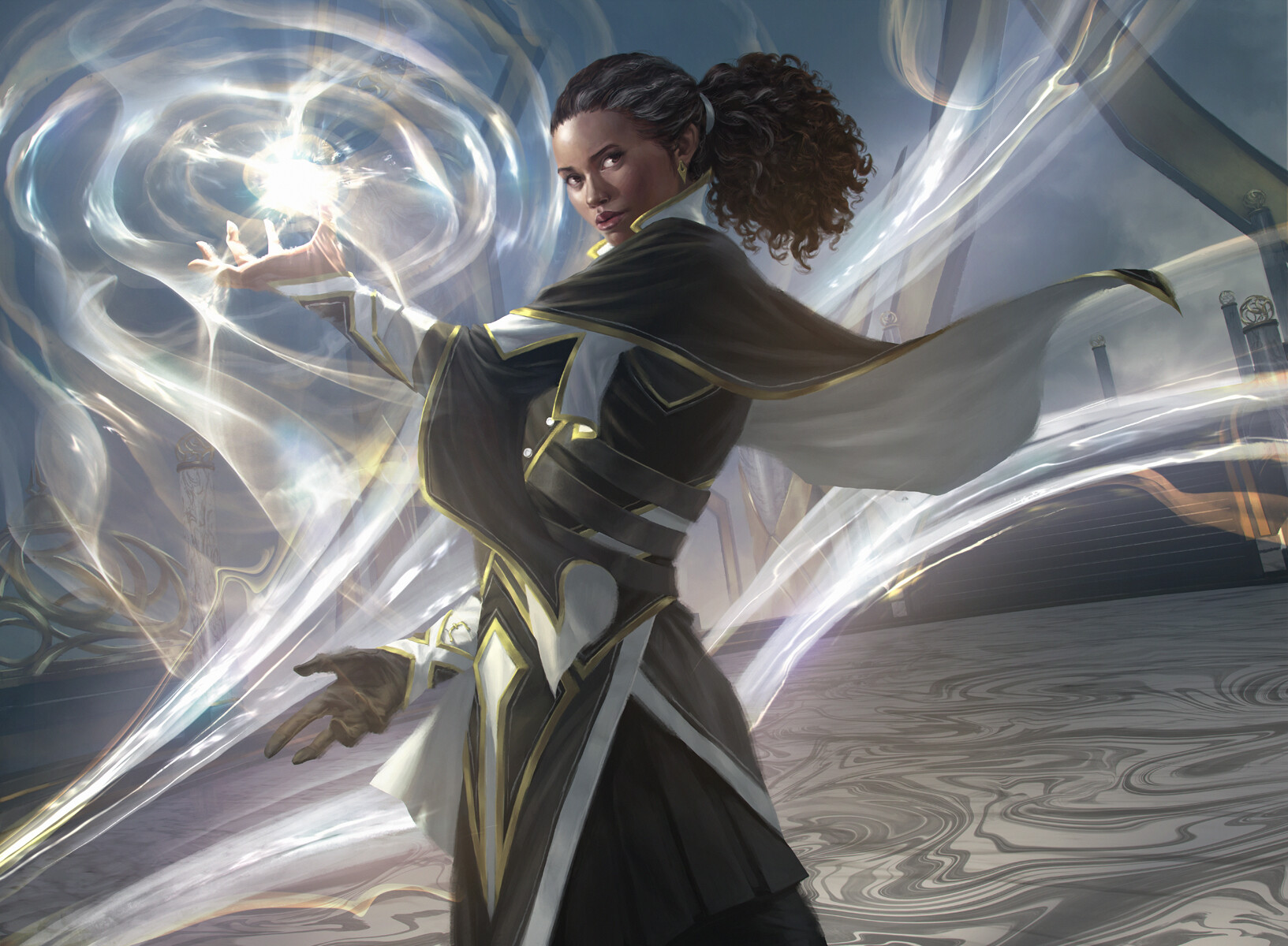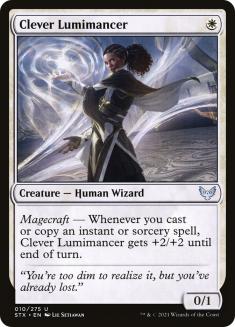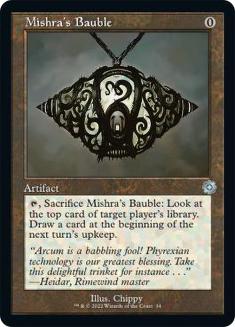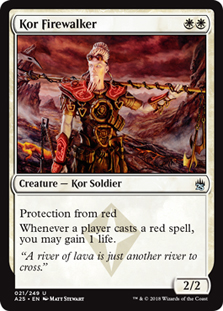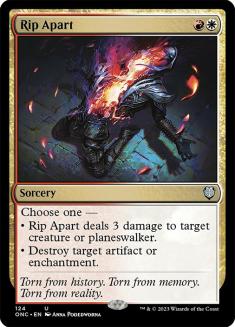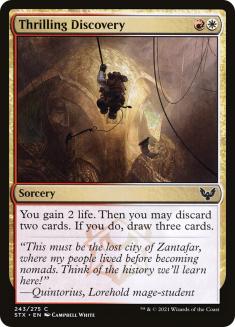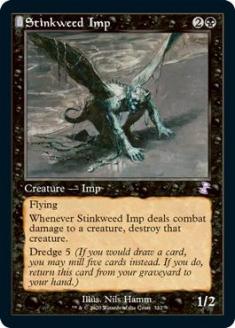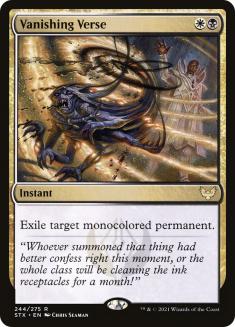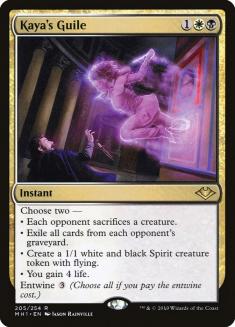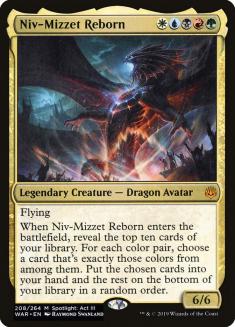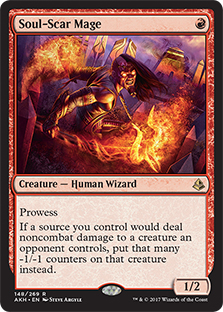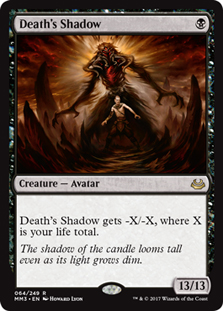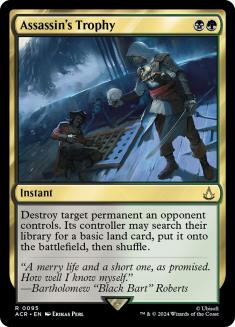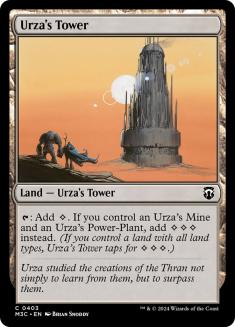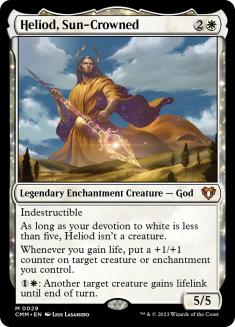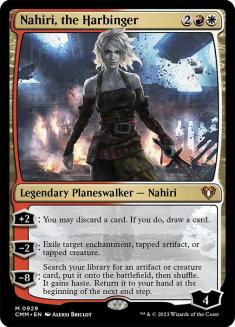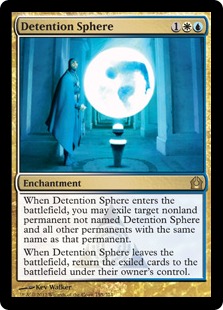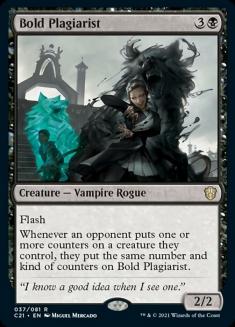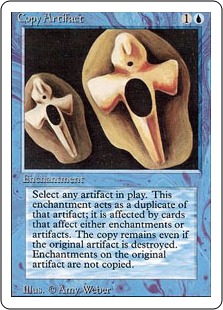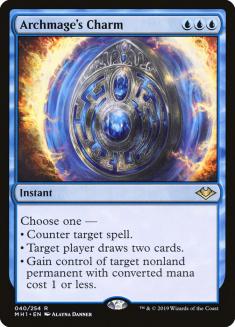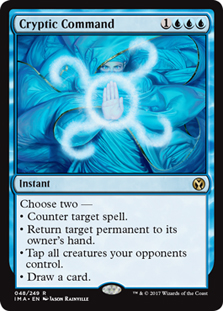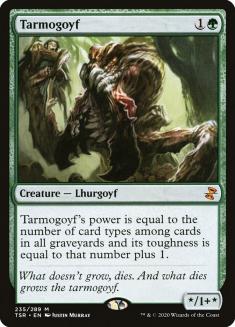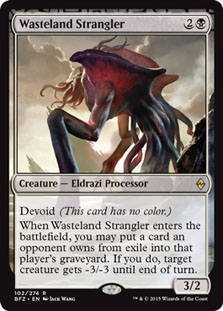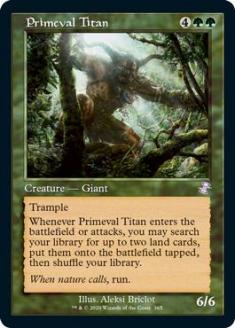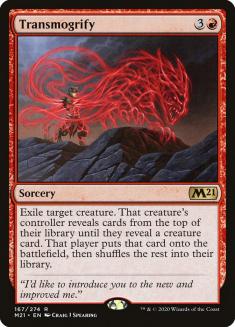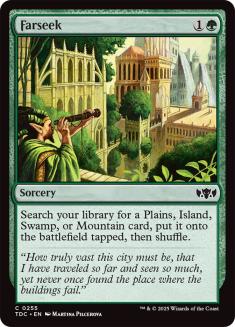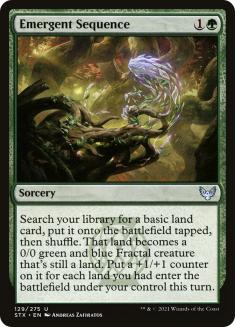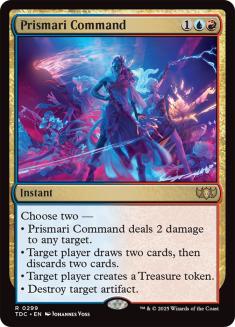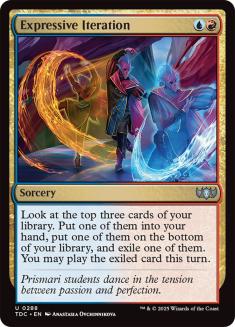Less than a week after release, Strixhaven has had a predictably relevant impact on the Modern format. Unlike the last eight sets or so, where some broken mythic rare with ten lines of text just outclassed every card printed since 1998, simple but powerful cogs were added to the format to boost existing synergies to a new level.
Last week was the first episode of Dominaria’s Judgment, SCG’s newest podcast featuring me and Dom Harvey chatting about Modern. We went through our Top 5 Strixhaven lists from our previous First Impressions, and our Top 3 cards all lined up. Let’s start by checking in on those cards: Clever Lumimancer, Thrilling Discovery, and Vanishing Verse.
Clever Lumimancer: Very Good
Clever Lumimancer is the Strixhaven card currently seeing the widest adoption in Modern. The reasons for this are really simple:
- We are mere days into the release of Strixhaven. The Clever Lumimancer lists are largely “add four copies of this to a known good deck” and are just linearly powerful, so it’s easy for people just to pick up and roll with it. Compare to Thrilling Discovery, which requires a huge rethinking of at least the manabase in Dredge if not more.
- Clever Lumimancer is an uncommon. The early days of a set release in the Magic Online economy are a bit wild on the supply-demand curve, and players might find the idea of paying premium prices on rares and mythics only to lose a huge percentage of their investment in a matter of days to be a poor option. Even if they are using a rental service, access to those cards may still be a choke point just on numbers in circulation versus broad demand.
- Clever Lumimancer is really good, so it wins a lot of matches. The key point brought up by Dom on the podcast is going up from eight prowess one-drops to twelve high-velocity one-drops is a game-changer in terms of having the “triple one-drop, ball of spells” draws that immediately end the game.
Creatures (14)
Lands (18)
Spells (28)

The stock lists of Boros Prowess (Lurrus) are exactly what you would expect given prior work in the Prowess archetype with Crash Through: a bunch of cheap creatures, almost all red cards since they don’t make good white cantrips, and Lava Dart plus Mutagenic Growth as the key to fast kills. Those cards are now just Fireblast and more Fireblast.
The flex slots vary between Boros Charm where the double strike mode finally comes up, Gut Shot for more free spells, and protection spells like Emerge Unscathed and Apostle’s Blessing. I remain unconvinced Abbot of Keral Keep makes it through another couple cycles of tuning, but for now it’s seeing play.
Mishra’s Bauble isn’t a combo with Clever Lumimancer, but it’s still an obvious inclusion. The synergy with Lurrus of the Dream-Den is too strong, it still works with your actual prowess creatures, and you can just cycle it to draw a spell for Lumimancer unless you draw it on the turn you are attacking.
Another point I’m stealing from my past podcasting self: white also gives you access to Kor Firewalker, which creates a bit of a feedback loop in the archetype. While Kor Firewalker isn’t a clean KO against Izzet Prowess, it’s still really good there, so playing the non-Lumimancer Prowess decks into all these opponents with white spells and Kor Firewalker is just a painful proposition. Everyone playing Izzet Prowess then switches to Boros Prowess (Lurrus) or a non-Prowess archetype, and you likely won’t start seeing Izzet again until the metagame goes through multiple additional cycles and the entire Prowess archetype goes through a rough patch.
Dom scores a point on me from his fourth-place choice of Rip Apart showing up, where my choice of Test of Talents has only been in Pioneer lists. Frakom, the same user with this Challenge Top 8, did 4-0 a Prelim earlier in the week with the more traditional Wear // Tear instead so the verdict is still out. It’s close and unclear which is better in this proactive shell.
Creatures (12)
Lands (18)
Spells (30)

While I have voiced my disdain for Ground Rift shenanigans, I’m somewhat interested in using it with Kiln Fiend to make super-aggressive Boros Prowess lists. My main concern is I don’t know how much faster these decks even are than stock Boros Prowess (Lurrus) due to the triple one-drop draws I mentioned, all at the cost of playing a bunch of definitely not-normal cards, but some fraction of this shell might be worth transiting over the the main branch of Prowess to hammer home wins against combo decks. Sideboard Assault Strobe or Kiln Fiend as anti-combo leverage is my best guess, or just Postmortem Lunge since anything that costs Phyrexian mana threatens to be broken.
Thrilling Discovery: Broken As Expected
Good luck, have fun Modern players.
Creatures (19)
Lands (19)
Spells (22)

Not to become the “my podcast cohost” guy, but Dom is writing about Thrilling Discovery Dredge in depth later this week. I’ll leave the details of playing the deck to him and stick to the metagame picture.
You didn’t see this deck in Preliminary events leading up to Saturday because no one boots up Magic Online after a day of work, reads all the exciting new cards, makes a hot meal, pours a cold beverage, and submits Stinkweed Imp. Maybe next week they do, but not on New Set Thursday™.
The rollout of the London Mulligan was weird relative to the release of everything going to hell in the format and the banning of Faithless Looting. If you didn’t play exactly the Mythic Championship in London, I don’t know when you would have played significant amounts against Dredge with Faithless Looting and the London Mulligan.
It’s messed up. The Top 8 of that Mythic Championship doesn’t have any of the deck, but you can look at the archetypes, maindeck Relic of Progenitus, and the raw quantity of sideboard hate to see how big a ripple effect it had on the format. Remember, Humans played Auriok Champion as a hate card for the matchup since the lifegain off multiple Champions or Phantasmal Image’d Champions was unassailable pre-Blast Zone. This exact trend happened before in the early days of Dredge at Pro Tour Valencia 2007, and we are back to the same point of history with Thrilling Discovery plus Ox of Agonas building up to a Faithless Looting equivalent.
Eight copies of the startup spell and a flashback or escape secondary draw spell let Dredge mulligan really aggressively to functional hands with a Nature’s Claim or similar answer. Dredge with just Cathartic Reunion and Ox of Agonas struggled reliably managing just the threat of Leyline of the Void. Dredge now places the onus on the opponent to have a strategy inherently good against Dredge, like Amulet Titan, or to have a hate card plus action each game. That action can be a good enough clock to race, or interaction to protect your hate card, but the burden of a two-piece setup is on both players.
You need six to eight hate cards if your deck is naturally weak to Dredge, four to six if it’s closer, and maybe three or four if you have the built-in advantage and just need to cover their sideboard improvements. That’s just the new rules of Strixhaven Modern. Change with the times or lose to Dredge.
Vanishing Verse: Looking For Homes
Vanishing Verse was a perfectly suited answer to Heliod, Sun-Crowned, but in practice finding a home for the removal spell has been a bit tricky due to its Orzhov color requirements.
Creatures (10)
Planeswalkers (10)
Lands (32)
- 3 Wooded Foothills
- 3 Windswept Heath
- 1 Snow-Covered Plains
- 1 Snow-Covered Mountain
- 1 Snow-Covered Island
- 2 Snow-Covered Forest
- 1 Snow-Covered Swamp
- 1 Overgrown Tomb
- 1 Temple Garden
- 1 Godless Shrine
- 1 Steam Vents
- 1 Stomping Ground
- 1 Breeding Pool
- 3 Pillar of the Paruns
- 3 Misty Rainforest
- 2 Verdant Catacombs
- 4 Prismatic Vista
- 1 Ketria Triome
- 1 Indatha Triome
Spells (28)
- 4 Lightning Helix
- 4 Utopia Sprawl
- 4 Abundant Growth
- 1 Abrupt Decay
- 1 Supreme Verdict
- 1 Kolaghan's Command
- 4 Bring to Light
- 3 Assassin's Trophy
- 1 Unmoored Ego
- 4 Kaya's Guile
- 1 Vanishing Verse
Sideboard

It seems like Vanishing Verse would naturally slot into the “multicolor cards theme deck”, but that’s not quite the case in Modern.
Kaya’s Guile is among the most important cards in the Modern Five-Color Niv-Mizzet (Yorion) deck. The core premise of casting Niv-Mizzet Reborn in Modern is that your deck is a pile of great interaction and card draw, so you will bury any remotely fair deck. But between your deck being 80 cards and cards like Rest in Peace being monocolored, you’re making zero deckbuilding concessions to combo decks and a lot of in-game concessions to them.
Kaya’s Guile is your one high-impact, freeroll piece of interaction for unfair decks that you can play in large quantities. Sure, you have the one Unmoored Ego to Bring to Light for, but that’s more a “just having access to this makes many 0% matchups into 35% matchups, which is too good to not spend a maindeck slot.”
I think Dredge might legitimately be weak against Five-Color Niv-Mizzet, or at least it was pre-Thrilling Discovery, because the Niv-Mizzet deck not only has a maindeck graveyard sweeper but between Bring to Light and Niv-Mizzet Reborn, it’s so good at repeatedly casting it in a game that Dredge gets run down.
This all matters because you then get Orzhov overlap in your Niv-Mizzet selections. While this might seem like overkill since it’s the difference between Niv drawing 3.5 versus 3.6 cards or something minor, the extra cards with Niv in Modern really do matter.
Ever since the printings of Fatal Push put both sides at removal parity, there has been an issue for the bulkier deck in Modern midrange mirrors. You actually get ground down by the more efficient deck due to positioning. It isn’t just raw tempo, where they cast Monastery Swiftspear and then Fatal Push a Tarmogoyf in the same turn, but those plays adding up to negate a lot of the two-for-one on-the-battlefield tools the bigger decks are trying to use. You can think of some of this in the context of planeswalkers and traction against them, but even simple stuff like Kolaghan’s Command never really being in a good position to two-for-one or just the fact that the bigger deck draws an extra land or two a game adds up.
You can solve this with Niv-Mizzet Reborn by just drawing a billion cards. Once that happens, you just make arbitrary exchanges at slightly suboptimal rates, and as long as you subsidize that with a little lifegain, you’ll win. But you do need to draw literally a billion cards, and every extra fail case where you hit multiple Orzhov cards is a potential game lost.
The other smaller piece of this puzzle is competition for that coveted anti-combo slot in the two-drop removal slot. Assassin’s Trophy isn’t going to beat Mono-Green Tron on its own, but it buys you time to Unmoored Ego one of their lands and clean up the game. While Vanishing Verse is combo insurance against Selesnya Company, you have other options for coverage there that also don’t overlap on Orzhov colors.
So why one copy of Vanishing Verse? This is your annual reminder that you can’t Bring to Light for planeswalkers or enchantments.
Creatures (4)
Planeswalkers (5)
Lands (25)
Spells (26)

The other deck that immediately comes to mind for Vanishing Verse is Esper Control, but I think there are two issues holding Vanishing Verse back there.
One is that Esper Control in Modern is really a deck driven by one or two experts, with a ton of margin for error on any changes you might make for it. You’re a deck of all answers, and Modern is still a format with a huge threat spread you need to precisely cover. I bet a lot of people want to play Esper Control because the old Snapcaster Mage experience is a popular one, but as long as TSPJendrek keeps winning every other week with the deck, they will just copy his list and move on. Since there wasn’t an event to copy his list from with Strixhaven, they don’t want to risk upsetting the Esper balance by adding a weird new removal spell to their list.
Some of this is also manabase competition. Casting an Orzhov spell in your Archmage’s Charm deck is likely to use all your white and black mana in a turn, which leads to bottlenecks with your other off-color cards. There’s a real cost to Vanishing Verse over a spell that just costs white or just costs black, and when you can already answer Heliod on the stack with your counterspells or bounce it with Cryptic Command, you need the exile much less. You’re already burning an Orzhov mana commitment on the still-crucial Kaya’s Guile, so fitting in Vanishing Verse is really asking a lot.
Creatures (17)
Lands (20)
Spells (23)

If you want to be casting Vanishing Verse, look more towards the true midrange decks with more flexible mana, more flexible removal slots due to inherent interaction against combo, and more need for a specific answer to Heliod. Stay away from the other “obvious” choices with weird hidden reasons to not play Vanishing Verse.
Everything Else: Doing Just Fine
Clever Lumimancer brings with it a ton of one-mana value spells, which means Chalice of the Void is back on the list of relevant Modern cards. While I have berated Eldrazi Tron in the past, it’s a reasonably good Prison deck disguised as a bad Tron deck. For a format asking for graveyard hate and answers to low-curve Prowess decks, you could do much worse than play it these days.
Creatures (4)
Planeswalkers (2)
Lands (29)
Spells (25)

I’m posting this list mostly to inform the public about this awesome new spin on an old archetype, completely independent of Strixhaven.
While Shaheen Soorani was hyping up the line of fetching for Dwarven Mine is a more Shaheen-friendly context of blue cards, other people were doing the Modern thing and just using it as a way to produce a fast Primeval Titan.
Creatures (10)
Lands (28)
Spells (22)

I had my eye on a Strixhaven card for this deck, and with Emergent Sequence also showing up in traditional Titanshift I expect to see a few Transmogrify lists in the future featuring it.
Despite technically being able to Farseek for Dwarven Mine, it won’t enter the battlefield untapped that way and you can’t turn Farseek into a body. Emergent Sequence seems a bit fragile at first glance, but it is shockingly easy to get it into a bulky range. Turn 1 Wooded Foothills, don’t use it; Turn 2 Bloodstained Mire, double fetch into Emergent Sequence is a 4/4 Fractal land into Turn 3 Transmogrify.
That is right out of Lightning Bolt range, and also out of Path to Exile range since that turns a land into a land. While the Fractal does die to Fatal Push, so do all your other Transmogrify targets, so it’s not like a dead card is now live the way it would be in normal Titanshift. Maybe giving your opponent a good on-curve way to use Fatal Push is still a huge liability, but the more consistent and fast combo setup is enticing enough for me.
Creatures (4)
Planeswalkers (3)
Lands (23)
Spells (30)

People are playing Prismari Command, so I’m obligated to report on it. I’m not convinced the card is actually good enough for the format, but it showed up in multiple Izzet Control lists, one with Blood Moon and one with Through the Breach plus Emrakul, the Promised End, and a Five-Color Niv-Mizzet (Yorion) list this weekend. It does make a bit of sense with the five-drop-centric decks as a ramp spell that’s also a relevant card, and destroying Chalice of the Void isn’t a horrible use of the card, but I struggle to imagine the game states where this is doing more than Electrolyze. Feel free to Tweet screenshots at me (@armlx) and prove me wrong.
The complete absence of Expressive Iteration in these decks and aspiringspike’s Top 8 Grixis Control (Lurrus) list is interesting to me, but I think that’s where a lot of the rest of Strixhaven sits. Beyond the top couple of cards that are reshaping the format, there are another dozen or two dozen cards that could be role-players and need testing or a little more support for a new shell. Expect this set to keep the format churning up to the release of Modern Horizons 2 in June and beyond.

